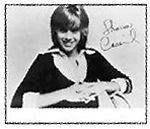Like the little black dress, Ennio Morricone is always in vogue. Since he first burst into the mainstream with his 1964 score for A Fistful of Dollars, the 72-year-old Italian composer has penned an estimated 400 film soundtracks, including The Mission, Cinema Paradiso, and, um, Exorcist II: The Heretic, as well as Sergio Leone’s famous spaghetti westerns. His theme to The Good, the Bad and the Ugly, one of the most instantly recognizable snippets of music in the world, even scored a No. 2 pop hit for Hugo Montenegro in 1968.
Morricone not only continues to work—earlier this year he supplied the music for Malena—but his influence keeps spreading, too. “Clint Eastwood,” the recent single by Gorillaz (the all-star cartoon ensemble featuring Blur’s Damon Albarn and DJ/ producer Dan “The Automator” Takemura), is as heavily indebted to the composer’s legacy as its title implies. Reprise Records recently issued Morricone RMX, on which 13 artists, including Nightmares on Wax, Apollo Four Forty, Fantastic Plastic Machine, and Thievery Corporation, put a new spin on his catalog.
To what can we attribute this enduring popularity? For insights, I hit up Robert Conroy, “chanteuse” for New York ensemble Morricone Youth. This quintet, formed by guitarist Devon E. Levins a year and a half ago, has acquired a swelling fan base thanks to its live interpretations of not only Morricone numbers like “Titoli” from A Fistful of Dollars and “Piume di Cristallo” from The Bird With the Crystal Plumage, but works by other cinema composers as well: Krzysztof Komeda, Lalo Schifrin, John Barry. Their “Faster Pussycat” medley of Russ Meyer themes could get your grandmother go-go dancing.
“Great soundtrack music, and Morricone’s in particular, has the ability to draw off all these different sounds happening in popular and classical music, and give back something that is extremely powerful, that has potency and beauty,” says Conroy. “Morricone’s music doesn’t go out of style because it’s helped set a lot of the styles. What he did through the ’60s, borrowing so heavily from what was happening in pop and rock, and incorporating that with classical music, turned around and impacted how people chose to play guitar.”
For Conroy’s band, trying to translate Morricone back into a pop-rock context isn’t always easy. “You have to think about how you compensate for things like strings or multiple voices,” the singer explains. “The hardest part of our set right now is ‘The Ecstasy of Gold’ from The Good, the Bad and the Ugly. Not only are we trying to cover for a horn section, but at one point I’m trying to compensate for the soprano and a choir simultaneously, coming up with a melody line that’s a little of both at the same time.”
But overcoming such obstacles has its rewards. “Because these composers were working with choruses and orchestras and soloists that were there to do a job, they could write something really challenging and know that they had an organization to fall back on that would be able to do it.” Any jackass can tackle “Diamonds Are Forever” at karaoke, but can you hit the high notes in Bob Crewe’s theme to Barbarella? Conroy can.
The cinema repertoire Morricone Youth plunders and preserves is bursting with the qualities Conroy thinks are missing in 99 percent of contemporary music: style, drama, and craftsmanship. “I hate putting it this way, because it sounds so Luddite, but you’re dealing with real quality, well-written music, as opposed to the kind of product that passes for pop today.”
So what happens when such exquisite fare falls into the hands of contemporary producers like the ones picked for Morricone RMX? Isn’t that just taking a nutritious biscuit of shredded wheat and turning it into a Frosted Mini-Wheat? Not necessarily, says Conroy.
“When you’re dealing with Morricone, you’re dealing with amazing textures and sounds, and the inherent drama. Because of the source material it’s drawing off of, the remix album is more than simply just pleasant. I’m a sucker for anything with a sexy, midtempo groove and a big soundtrack sample. But for every inspired song by Portishead, there are 900 people who just churn it out. But on most of the stuff [on Morricone RMX], it sounds like they’re taking who the person that they have a chance to remix is very seriously.”
Morricone Youth take him very seriously, too. They’re not the only ones. Earlier this year, Conroy and his cohorts flew to London to see the composer conduct a retrospective concert. “He came out, and it was like Nick Cave or Bj�came out on stage. Everybody went berserk. And I don’t think he was quite prepared for that. That became our joke: ‘What did you do on vacation?’ ‘Made a little old Italian man cry.'”
For more info on Morricone Youth, visit www.morriconeyouth.com or e-mail info@morriconeyouth.com.






